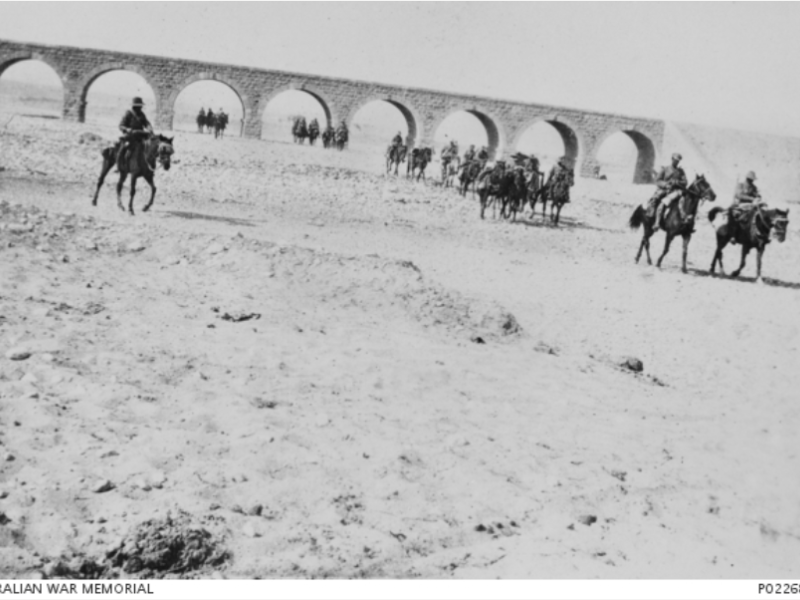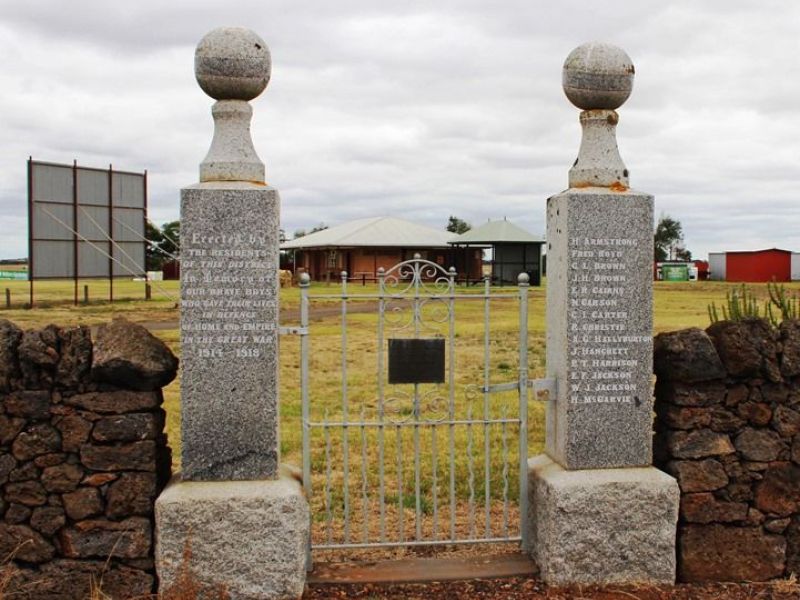Driver Edward Todd Harrison, 4th Light Horse Regiment
Edward Harrison was born in 1879, one of nine children of George and Susan Harrison. The Harrisons were a well-known and respected family within the small rural community of Pomborneit on Lake Corangamite in western Victoria. In addition to farming, Edward was an active member of the Pomborneit Rifle Club, and was one-time secretary of the Pomborneit Presbyterian Church.
After a recruiting meeting at the Pomborneit Town Hall in July 1915, Edward Harrison enlisted in the Australian Imperial Force. According to a report in the local newspaper, “the hall was filled and a splendid display of patriotism marked the proceedings”.
Along with several other men, Harrison travelled to Melbourne, where he signed on for overseas service. Owing to his experience with horses, he underwent training as a trooper in the Australian Light Horse, and embarked for Egypt with a reinforcement group for the 4th Light Horse Regiment in August 1915.
In October, Harrison joined the regiment on Gallipoli, where the light horse fought as dismounted infantry. After the evacuation, Harrison returned to Egypt, where he was posted as a driver within the A Squadron’s transport section, responsible for the regiment’s water, supplies, and ammunition.
This work was vital to operations in the desert, where the ability to advance was largely dependent on the availability of water and fodder.
After spending most of 1916 defending the Suez Canal, the 4th Light Horse Regiment participated in the British campaign against the Ottoman Turks, involving a successful advance across the Sinai Desert and into Palestine.
The regiment’s first major action took place at Beersheba on 31 October 1917, and after Gaza fell, it took part in the pursuit that followed. In 1918, Harrison was involved in heavy fighting east of the Jordan River during the raid on Es Salt.
By mid-1918, the Anzac Mounted Division had entered Jerusalem and occupied a defensive position in the Musallebeh sector known as the Wadi el Auja line.
Around 6am on 14 July 1918, Harrison was mortally wounded when Turkish artillery opened up on the Australian positions. As he was holding the reins of a water cart horse, he was struck in the head by a shrapnel pellet and died before stretcher-bearers could carry him to the nearest aid post. He was 39 years old.
Harrison was buried at the foot of Mount Temptation, and was later reinterred at the Jerusalem War Cemetery in Israel where he rests today. The inscription “Ever remembered” appears on his headstone.
According to his mates, Edward Harrison was “a very fine chap and well liked” by all who knew him. He had been with the regiment since Gallipoli, and many felt his loss keenly.
The small community at Pomborneit was devastated by the news of his death. The local newspaper described him as “a fine stamp of young Australian … possessed of sterling and amiable qualities which won for him general admiration”.
Aaron Pegram, Historian, Military History Section
Image: Mounted troopers from the 4th Light Horse Brigade outside Beersheba, November 1917

 Australian War Memorial
Australian War Memorial